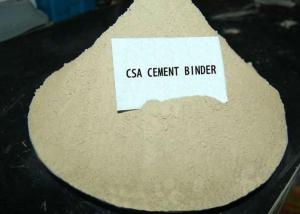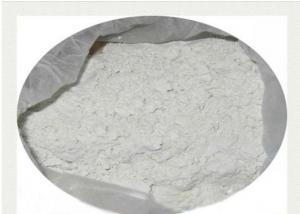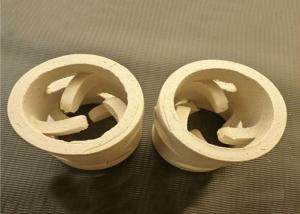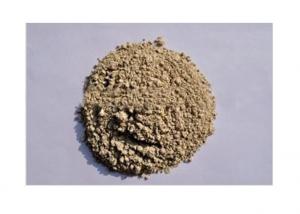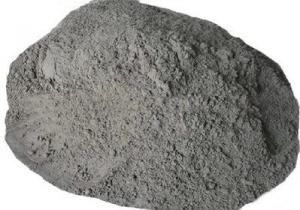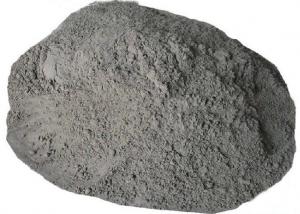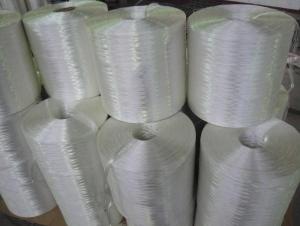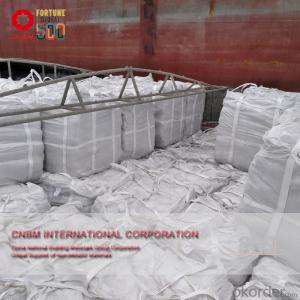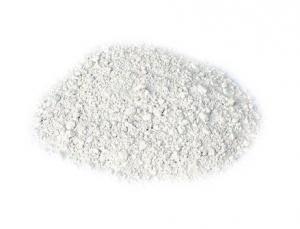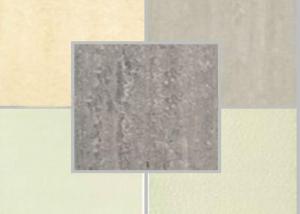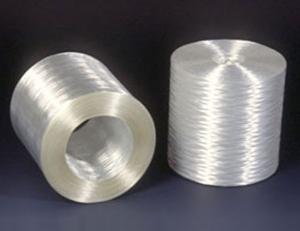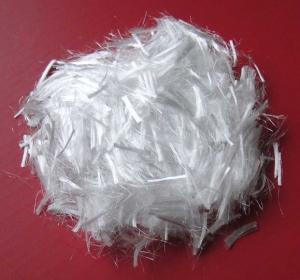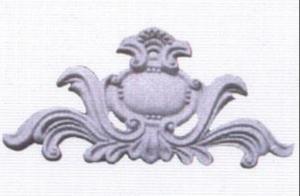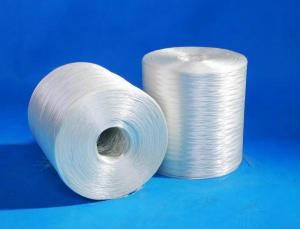Light Color CSA Cement
- Loading Port:
- China Main Port
- Payment Terms:
- TT or LC
- Min Order Qty:
- 20 Metric Tons m.t.
- Supply Capability:
- 1000 Tons per Month m.t./month
OKorder Service Pledge
OKorder Financial Service
You Might Also Like
The setting time is quicker than that of PORTLAND cement, and it also has a rapid strength development.
General characteristics
HCSA BINDER is a hydraulic binder based on calcium sulphoaluminate, rather than calcium aluminates which are the basis of CALCIUM ALUMINATE CEMENT or calcium silicates which are the basis of PORTLAND CEMENT. The difference gives HCSA BINDER properties particularly suited to formulators of products such as self-leveling or self-smoothing compounds, rapid hardening screeds, tile adhesives, non-shrink grouts, rapid setting and special mortars.
HCSA BINDER is used in formulated products either as a hydraulic binder by itself or with the addition of calcium sulphates, or in combination with PORTLAND cement. The setting time is quicker than that of PORTLAND cement, and it also has a rapid strength development. HCSA BINDER does not release free lime during hydration thus eliminates the major cause of efflorescence.
HCSA BINDER is manufactured under a strict quality assurance systems GB/T 19001-2000 (i.e. ISO9001:2000) and GB/T 24001-1996 (i.e. ISO 14001:1996)) which accommodates the technical requirements of building chemistry formulators.
The properties of HCSA BINDER conform to the standards of the manufacturer and to the Chinese relevant standards.
- Q: Technical question here. I know they can make marine cement by, essentially, bubbling CO2 through sufficiently basic ocean water and letting insoluble calcium and magnesium carbonates form. I don't know the details further than that, but it's something like that. One problem is that, in order to negate the acidifying effects of the CO2, they have to add a base.I know that at least some desert soils (maybe most of them) are fairly alkaline, and contain a lot of calcium and magnesium and such. So could you meaningfully take a bunch of desert soil, put it in water, then bubble CO2 through it to make marine cement? Or would there be a simpler (or at least less water-intensive) method to collect the calcium and magnesium carbonate from desert soils for use as cement? Or is there some other broad aspect or angle of the problem that I'm missing?
- Caliche is a hardened desert soil (rock) that is typically near the surface. I would think that you would end up digging a lot of desert to get much carbonates. There would be a large amount of heavy equipment use, lots of dust, and lots of lost habitat. Typically cement is produced by exposures of limestone that are ground down and converted to cement. I would think this would generally be a more economical and more environmentally friendly option. Since you apparently have a chemistry background, you may already know this, but cement is generally made by taking calcite or dolomite and heating it up to create lime / cement. This has been done since the Roman Empire. I have never heard of bubbling CO2 in calcium and magnesium carbonates. Are you suggesting that bubbling CO2 in ocean water will precipitate calcite? I think it would probably have the opposite effect and create more acidity which would tend to dissolve carbonates. Note: Ocean water is very basic. It is far from acidic and will almost certainly never become acidic. If you add a base to the desert soil, form a pile on the ocean floor, and bubble CO2 into it, you might precipitate some CO2 if the water is warm enough IMO. It would probably make more sense in most instances to simply use regular cement which is designed to form a very solid and strong structure. Carbonates will precipitate out of sea water in warm shallow water. Some of the beaches of the Bahamas are formed from precipitated carbonates called oolites.
- Q: Describe how concrete is made from cement?
- when you mix sand gravel with water cement a chemical action starts, the sand gravel are fillers, the cement and water are the chemical bonding agents when the two bond and sets up it becomes concrete and it takes 27 days for it to fully cure
- Q: The cement is 1.5 ft thick about and its a normal pain of glasss
- CEMENT, definitely, due to its thickness and internal structure. the switch from air pockets to hard cement over and over again for 1.5 ft is a terrible process for wifi to try and fight.
- Q: I want to rebuild my porch, It's relatively small.What kind of cement should I purchase.The more info. the better ;)
- First off, you want Concrete, not cement. (Concrete is mostly sand and rock and about 1/6 cement) If you need just a little bit, you can buy this in sacks that you mix with water. If you need more, it's usually brought out in big trucks. Somewhere in-between is getting it in smaller amounts pre-mixed from local rental yards, or trucks that mix it as needed at your house. Do you just need pier posts instead? Those can be bought ready-made. Building forms for concrete and also pouring concrete are skills you should learn on someone else slabs first, don't start here, unless it's all pretty much stuff that doesn't show. It's real easy to do it wrong. I've had forms that blew out, and concrete that set up too fast. It's physically tiring to work with, and has to be done quickly sometimes. Poor concrete work seems to look ugly forever, and the material expense is high, too. I think this is a job worth hiring out. Cost for materials varies locally, concrete in large amounts is sold by the yard. I haven't bought it for awhile, I would guess $100 a yard delivered, but this could be pretty wild. Call some local concrete suppliers for a better guess.
- Q: If your whole body, except for your head, were to be buried in cement is it possible to survive?
- No. The cement would harder, and your lungs couldn't move in and out. Your diaphragm couldn't move. You couldn't excrete waste either.
- Q: I have a good friend who was exposed to Portland cement a number of years ago. She continues to experience severe facial scabbing and oozing sores. She has not received proper treatment from her local physicians. Is anyone aware of a dermatologist who she can contact regarding treatment? Anyone help is grat appreciated!!
- Portland cement has Lye as an ingredient. This ia a very caustic substance(causes chemical burns) however the effects do not last for years- just days. The problem is obviously something else and she should see a dermatologist
- Q: is there any alternative material for cement?
- in okorder / for more information on house building and decor
- Q: how many cubic meters of cement are there in a 40 kgs. (94lbs) bag of portland cement?
- The Specific Gravity of Portland Cement is 3.15 so there are 0.0127m3 of Portland cement in a 40kg bag measured as a solid. As the density of the cement in the bag is about 1506kg/m3 (allowing for the voids between the grains) the volume of a 40kg bag is about 0.0266m3
- Q: I just finished a craft project and I'm now left with 45lbs of quick drying cement. Any ideas?
- of course it's possible but many different factors would decide how possible it was ie: Person is inside a large vat chained to the bottom the quick drying cement is poured in to above their head. In this case unless someone let them out of the chains it would almost positively be fatal. If however the person just has the cement poured on them it will just roll off them and is less likely to be fatal.
- Q: I recently had my braces removed and while looking in the mirror at my teeth, I noticed black discoloration on several teeth. Is this a common color of the adhesive they use or did my teeth somehow get massive cavities?
- Orthodontic cement is clear hen they out it on and sort of whitish when it dries. So I have no idea what's on your teeth.
1. Manufacturer Overview
| Location | Hebei,China (Mainland) |
| Year Established | 1998 |
| Annual Output Value | US$2.5 Million - US$5 Million |
| Main Markets | North America; South America; Eastern Europe; Southeast Asia; Africa; Mid East; Eastern Asia; Western Europe; Southern Europe; South Asia |
| Company Certifications | ISO 9001:2000;ISO 14001:2004 |
2. Manufacturer Certificates
| a) Certification Name | |
| Range | |
| Reference | |
| Validity Period |
3. Manufacturer Capability
| a) Trade Capacity | |
| Nearest Port | Xingang, Jingtang |
| Export Percentage | 21% - 30% |
| No.of Employees in Trade Department | 11-20 People |
| Language Spoken: | English, Chinese, Japanese, Russian, Korean |
| b) Factory Information | |
| Factory Size: | 1,000-3,000 square meters |
| No. of Production Lines | |
| Contract Manufacturing | OEM Service Offered Buyer Label Offered |
| Product Price Range | Average |
Send your message to us
Light Color CSA Cement
- Loading Port:
- China Main Port
- Payment Terms:
- TT or LC
- Min Order Qty:
- 20 Metric Tons m.t.
- Supply Capability:
- 1000 Tons per Month m.t./month
OKorder Service Pledge
OKorder Financial Service
Similar products
Hot products
Hot Searches
Related keywords
